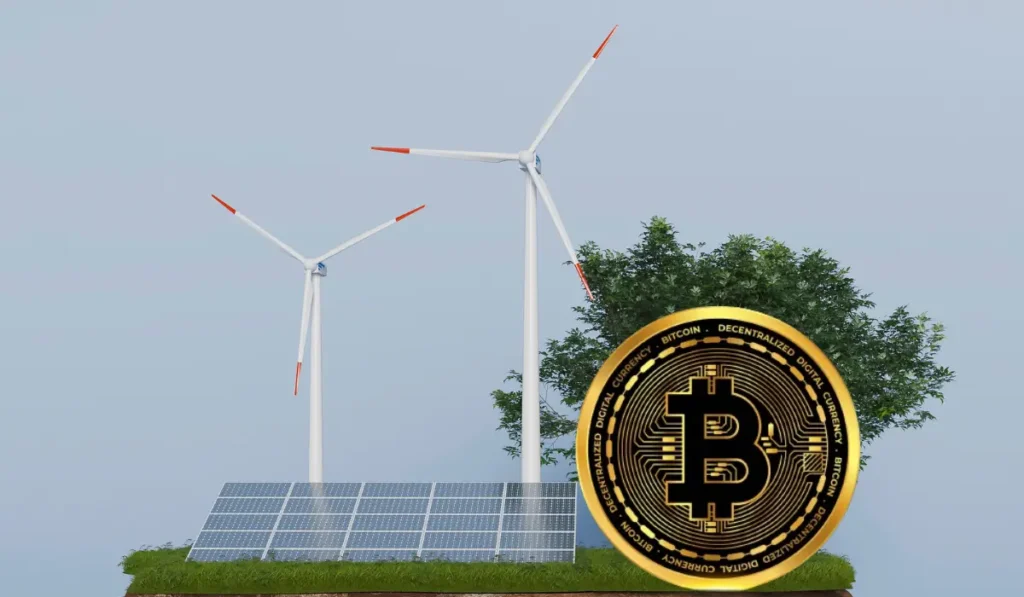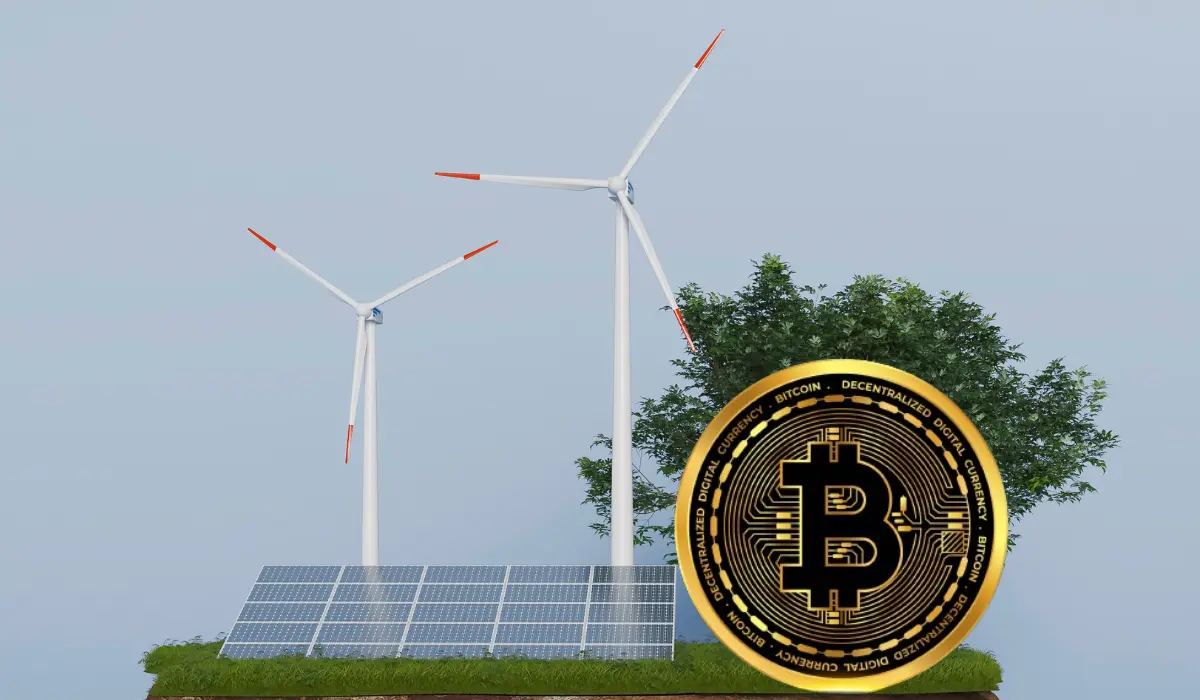
Bitcoin and renewable energy an unlikely pairing often touted as a potential solution for a cleaner future. But can this marriage of convenience actually work? This article delves into the complexities surrounding this concept, exploring both the optimistic scenarios presented in a recent study and the significant challenges that remain in the real world.
The Intriguing Proposition: Bitcoin Mining as a Catalyst for Clean Energy
A new study published in PNAS proposes a bold idea Bitcoin mining, notorious for its energy consumption, could be harnessed to accelerate the transition to renewable energy sources. The study envisions a scenario where the profits generated from Bitcoin mining are reinvested into clean hydrogen production and renewable energy infrastructure like solar and wind farms.
However, the key to this concept lies in the details. The study emphasizes that Bitcoin mining must be powered by clean energy sources, not the fossil fuels that currently dominate the grid. Additionally, the authors propose a crucial shift in who controls the mining operations. Instead of individual miners focused on short-term profits, they suggest that energy companies or climate-focused groups take the reins. This is a critical point, as individual miners lack the financial incentive to prioritize renewable energy adoption.
Can We Overcome the Hidden Challenges?
The rosy picture painted by the study requires navigating several significant hurdles. Here’s a closer look at the potential pitfalls:
- High Entry Costs and Short-Term Focus: Establishing and operating a Bitcoin mine is a capital-intensive endeavor. Existing mines typically run continuously to recoup their investments and maximize profits. This relentless operation model contradicts the long-term vision of clean energy investment proposed in the study.
- Policy Gaps and Uncertain Incentives: The study acknowledges the need for robust policies to ensure that Bitcoin mining profits are indeed channeled towards clean energy initiatives. Without such safeguards, these funds could be diverted, jeopardizing the entire concept.
- The Intermittency Issue: Renewable energy sources like solar and wind are inherently intermittent, generating power based on weather conditions. This presents a challenge for Bitcoin mining, which requires a constant energy supply. While the study proposes using green hydrogen as an intermediary to store excess renewable energy, the technology is still in its early stages and requires further development.
Bitcoin as an “Energy Carrier”? A Debatable Analogy
The study positions both hydrogen and Bitcoin as “energy carriers.” Green hydrogen, produced using renewable energy, can store excess energy as fuel. Bitcoin, if used to purchase green hydrogen or support renewable energy infrastructure expansion, could be considered a virtual energy carrier, according to the study’s authors.
However, this analogy is contested by some experts. Unlike true energy carriers like batteries, Bitcoin is a one-way street. Energy goes into the system to mine Bitcoin, but it cannot be retrieved later. This fundamental difference raises questions about the suitability of calling Bitcoin an energy carrier.
A Glimpse of Hope: Utilizing Surplus Renewable Energy
The study’s authors aren’t strangers to exploring the potential synergy between Bitcoin mining and renewables. In a previous work, they explored the possibility of using Bitcoin mining to utilize surplus renewable energy from newly constructed solar and wind farms waiting to be connected to the grid. This scenario offers a more realistic application, addressing the issue of intermittency.
The Grid Connection Challenge: Infrastructure Bottlenecks
Even if the idealistic scenario of utilities running Bitcoin mines to fund clean energy becomes a reality, there’s another hurdle to overcome infrastructure limitations. Connecting new facilities like Bitcoin mines, hydrogen plants, and renewable energy farms to the grid requires transformers, inverters, and other equipment. A backlog of infrastructure projects already exists, and these various projects might end up competing for the same limited resources, creating a bottleneck.
The Price Volatility Factor: A Market in Flux
The success of this entire concept hinges on the price of Bitcoin, a notoriously volatile asset. While the price may be hovering around $70,000 at the time of writing, it recently emerged from a “Crypto Winter” that saw prices plummet below $20,000. This price uncertainty casts a shadow over the long-term viability of the proposed model.
Conclusion: A Promising Idea with Significant Hurdles
The idea of Bitcoin mining driving the transition to clean energy holds promise. However, the challenges are substantial. From ensuring clean energy sources and long-term investment horizons to navigating policy gaps, infrastructure bottlenecks, and price volatility, there’s a long road ahead before this concept becomes a reality. While Bitcoin mining may not be a perfect solution, continued research and exploration are crucial to identify innovative ways to leverage technology for a more sustainable future.


